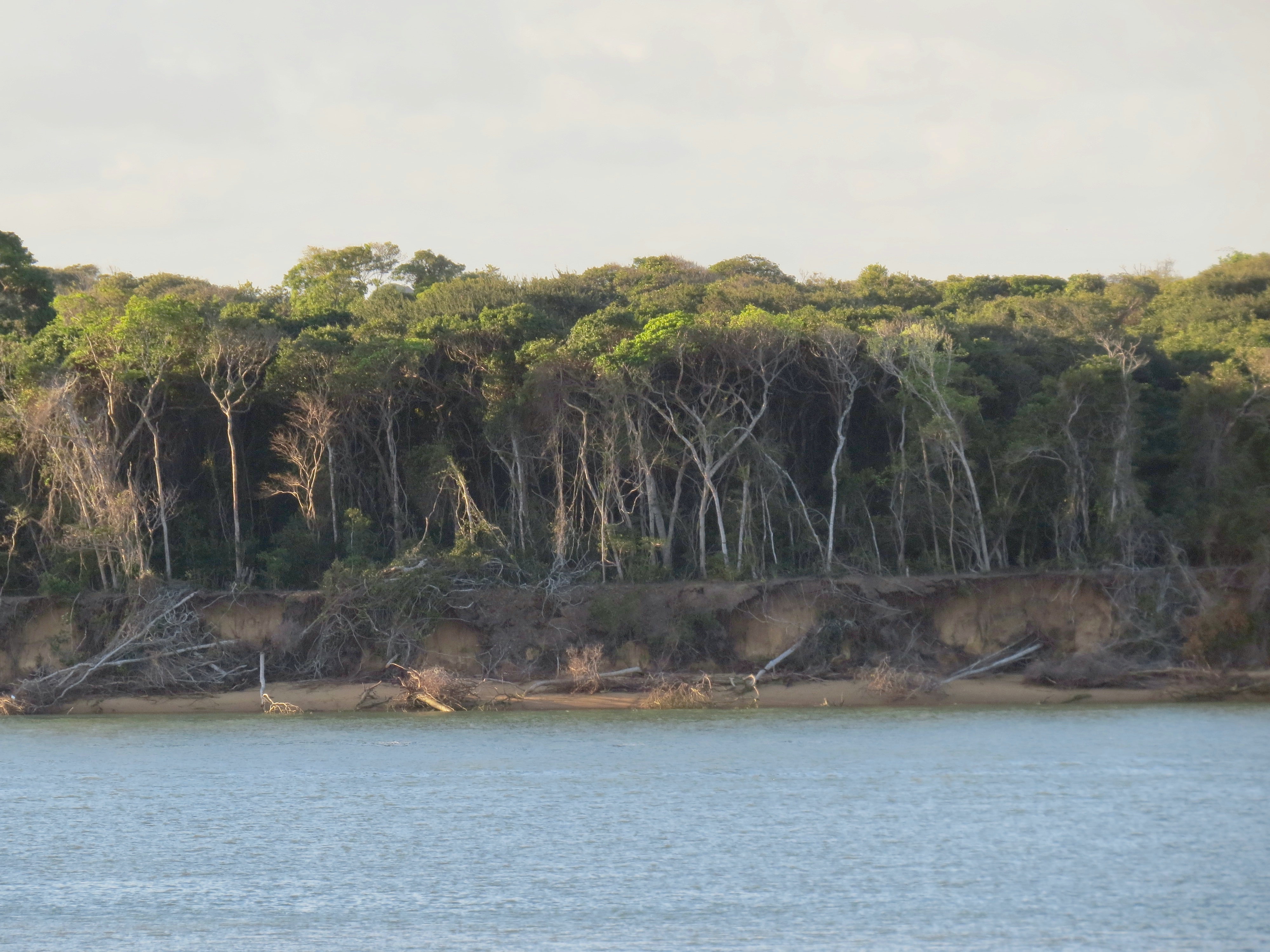Vižobrig
This land holds our people and is our home, but no man can settle these parts.
The region of Vižobrig, encompasses a low-lying stretch of dense jungle that occupies the land on northern side of the Visokgoraj Mountains, stretching to the coasts of the the Miranmorz̧ Sea. The region, once home to a flourishing civilization, is largely uninhabited as its previous occupants vanished without a trace and the jungle has moved in to reclaim the buildings and monuments that were left behind in testimony to their existence.
While the dense jungles may be home to a wide variety of plant and animal life, they have proven to be incredibly inhospitable to sustained human habitation. The Glagolan refugees who have settled in the region have had to build their lives in pockets near the coastline and in areas where the vegetation was thin enough to allow for clearing, given the limited tools they had at their disposal. Three centuries later, the peoples of Vižobrig are still largely confined to small pockets of settlement that fiercely resist the jungle's continued encroachment.
The dark jungles offer more dangers to humans than the distinct possibility of losing one's way or the presence of hostile wildlife. A number of malicious spirits haunt the dark recesses of the wilderness. It is a common belief among the Rutenkīj people that these spirits are the souls of humans who have died violent or premature deaths and are thereby unready, or unable, to leave the world of the living. Regardless of their origins, these spirits hold a special hatred for the living and lose no opportunities to take out their anger.
Geography
The volcanic, but long dormant, Visokgoraj Mountains that serve as the region's southern and western boundary run in a generally east-west direction between the Miranmorz̧ Sea and the @Rūdgoraj Mountains that serve as the eastern boundary to the region. Cradled inside this bowl and sheltered from much of the outside world, the Vižobrig region contains thick jungles criss-crossed by a network of streams and rivers and liberally supplied with lakes, swamps, and other wetlands.
Localized Phenomena
Vižobrig's weather patterns are fairly typical for its tropical climate. Largely absent is the seasonal cycle typical of temperate zones, and the full force of Gaés' scorching sun heats the region up to a daytime high of nearly 50ºC, necessitating many of the region's inhabitants to take shelter in the middle of the day. Crops, likewise, will wither and die away if exposed to the full force of the daytime sun for an extended period of time.
Massive rainstorms form in the area and Vižobrig, as a low-lying area between several mountain ranges and the nearest sea, sees its waterways flood and roofs battered by the constant force of rain during the annual storms. Settlements in the region, especially those built near rivers and other bodies of water, frequently possess buildings and walkways that are slightly raised off of the ground to accommodate the rising tides.
History
The Age of Heroes
Long before the modern age, the region of Vižobrig was settled by a technologically and culturally advanced peoples known to its current inhabitants as the Neznanij or Strangers. The Strangers lived in large megalithic cities dotted with public and ceremonial buildings, of which temples to their five gods were the most grand. The collapse of Stranger society was not a sudden one, but one that saw the abandonment of the larger cities as their protection from the elements began to fail and they were unable to provide for such a large population.
Dispersed throughout the region in smaller, agrarian homesteads, the Strangers began to lose contact with each other as the jungle began to encroach on what were once commonly used thoroughfares. As individual groups grew isolated from their neighbors, they struggled to keep the jungle at bay and, eventually, even the homesteads succumbed to the jungle's remorseless growth.
The Explorers
The Age of Silence came to an end when a large group of Glagolan settlers, displaced by the large-scale eruption of volcanoes that surrounded their ancestral homeland, sailed southeast and came across the region's verdant coasts. Chief among the mythic leaders of the settlers were brothers Rutenik and Borišost whose constant disagreements led to a split among the refugees and the establishment of two different sites of settlement.
The Modern Age
The settling of the Glagolan people on the shores of Vižobrig marks the beginning of the Modern Age. Tribal groups descended from the first settlers have expanded to occupy most of the coastal areas and a large number of the inhabitable islands of the Miranmorz̧ Sea. The region's new occupants may have adapted to the region with advances in technology that allow them to clear undergrowth and harvest the jungle's abundant resources with greater efficiency, but have proved unsuccessful at penetrating the vast interior of the region.
A recent expedition into the interior by Borišij tribesmen discovered wondrous relics, some of which produced strange and great powers, from what appeared to be the remnants of a city the scale of which the explorers had never before seen. Word of this discovery has since spread to all the major tribal groups in the region and similar expeditions into the region's dark interior are being planned.





Comments